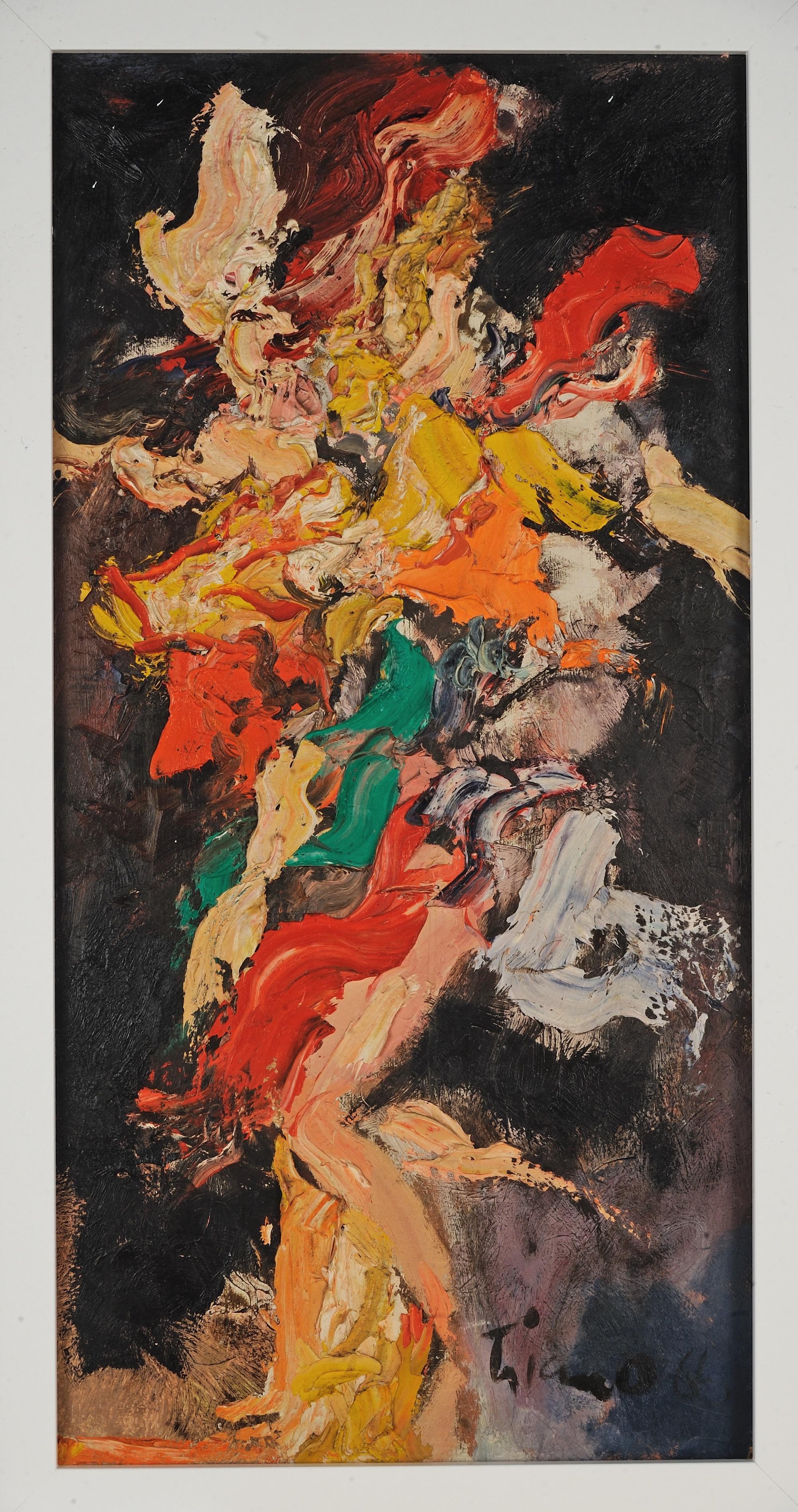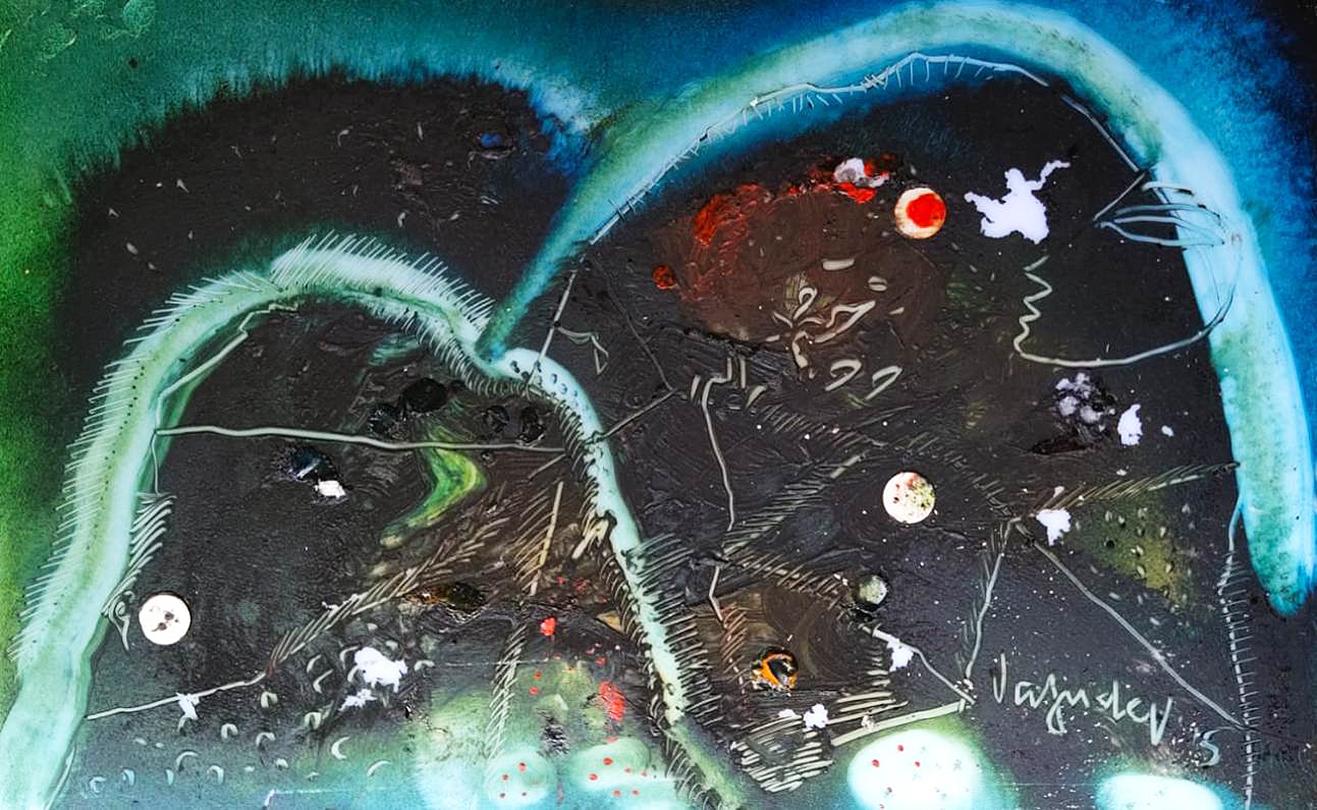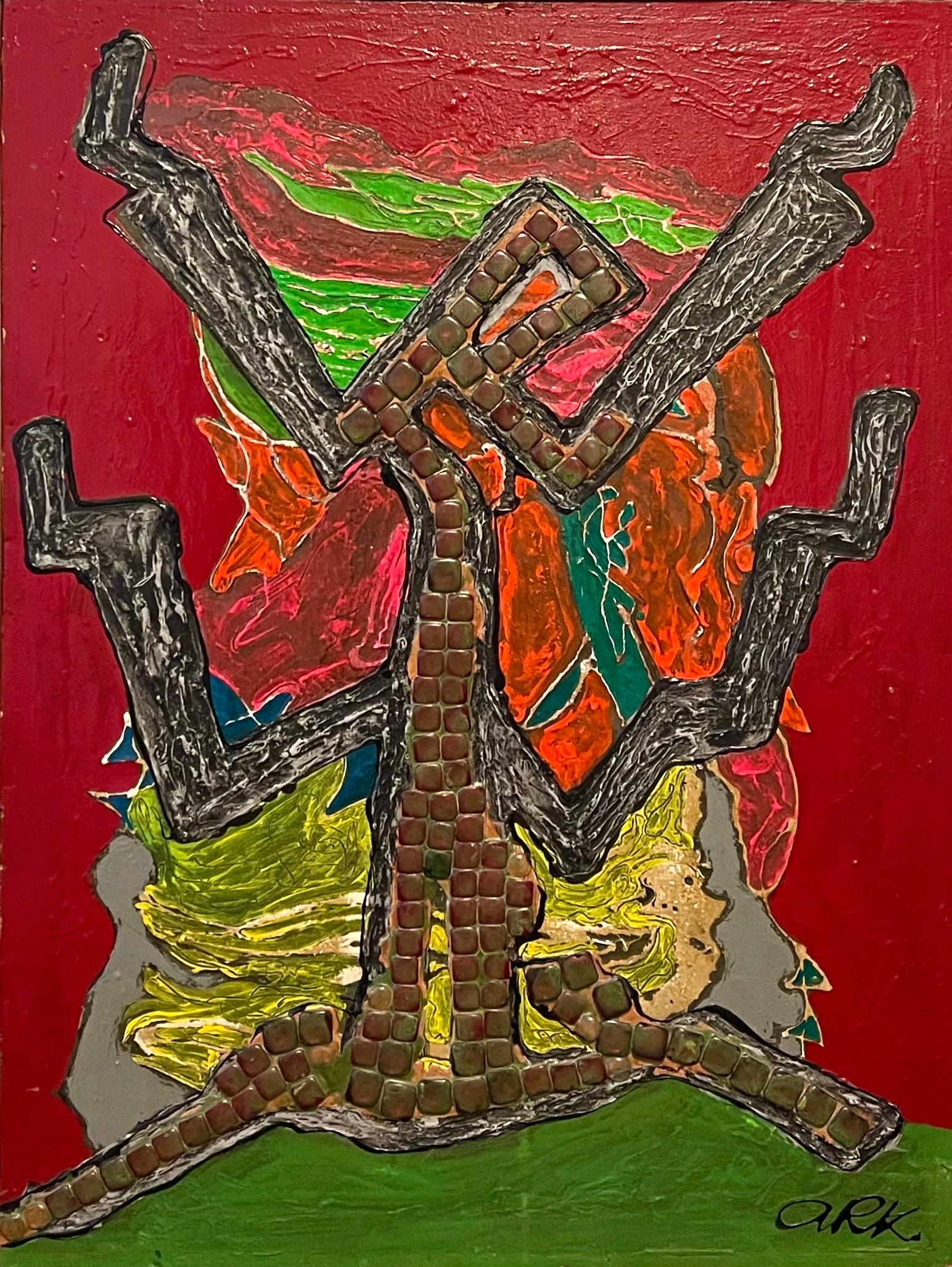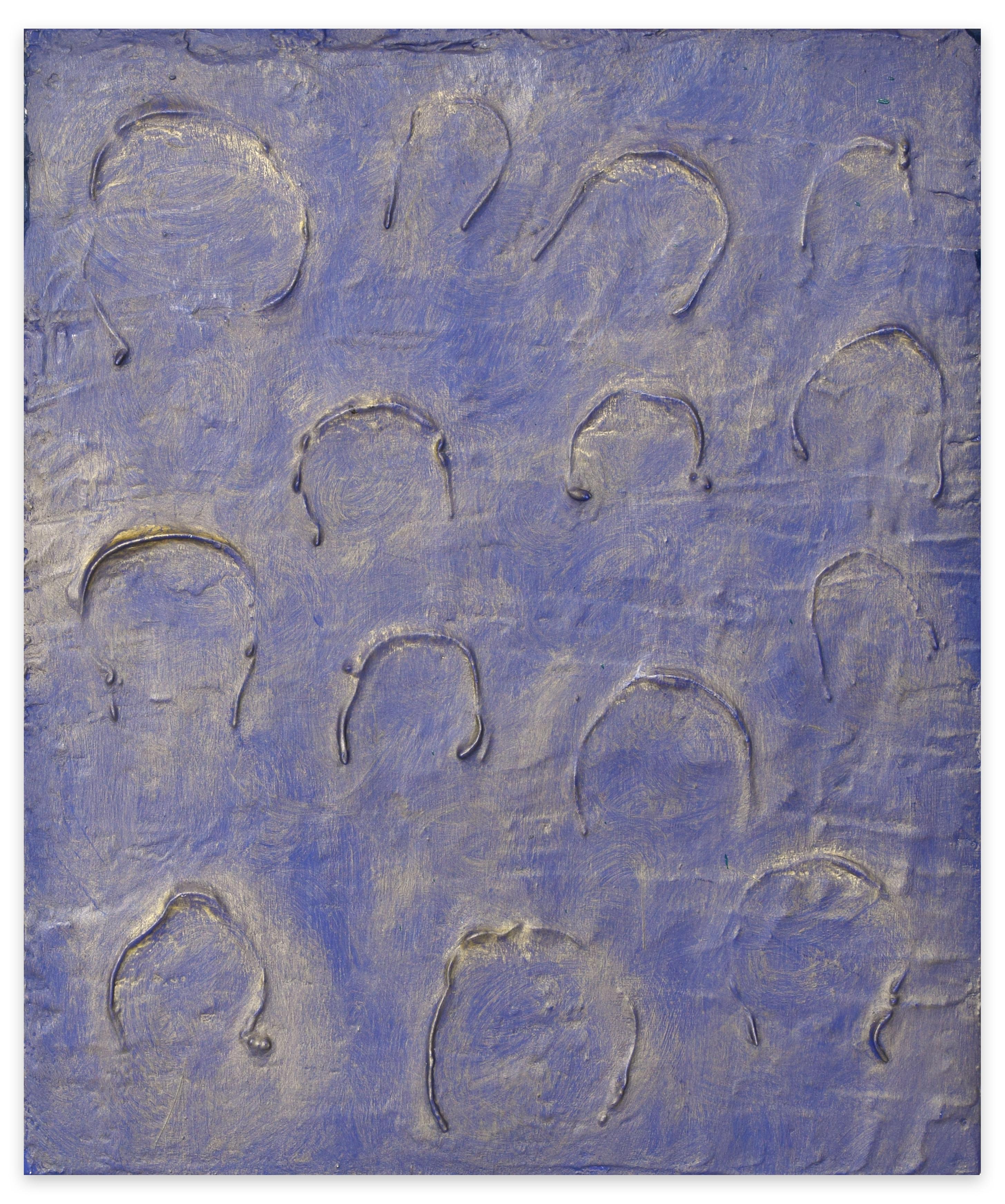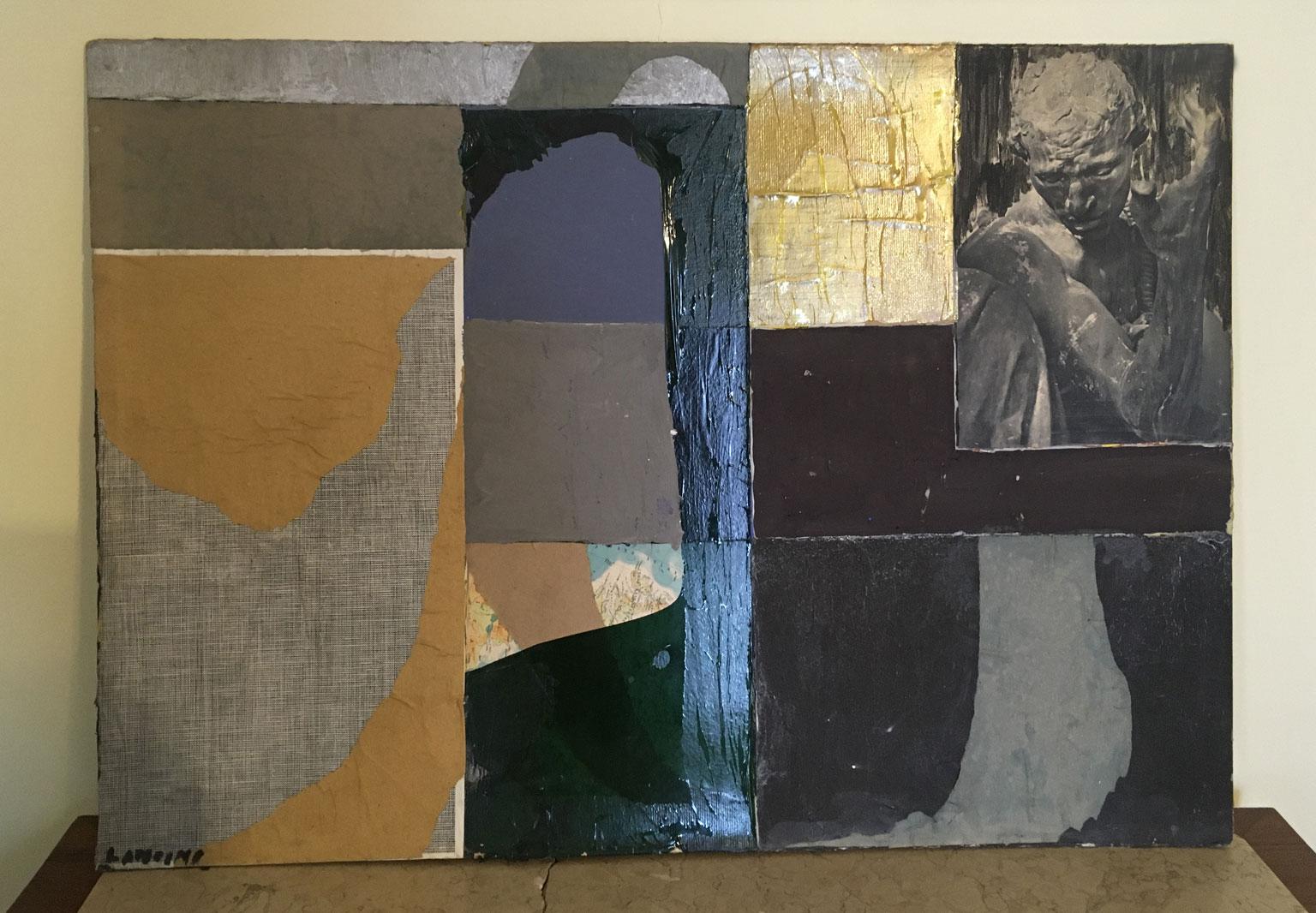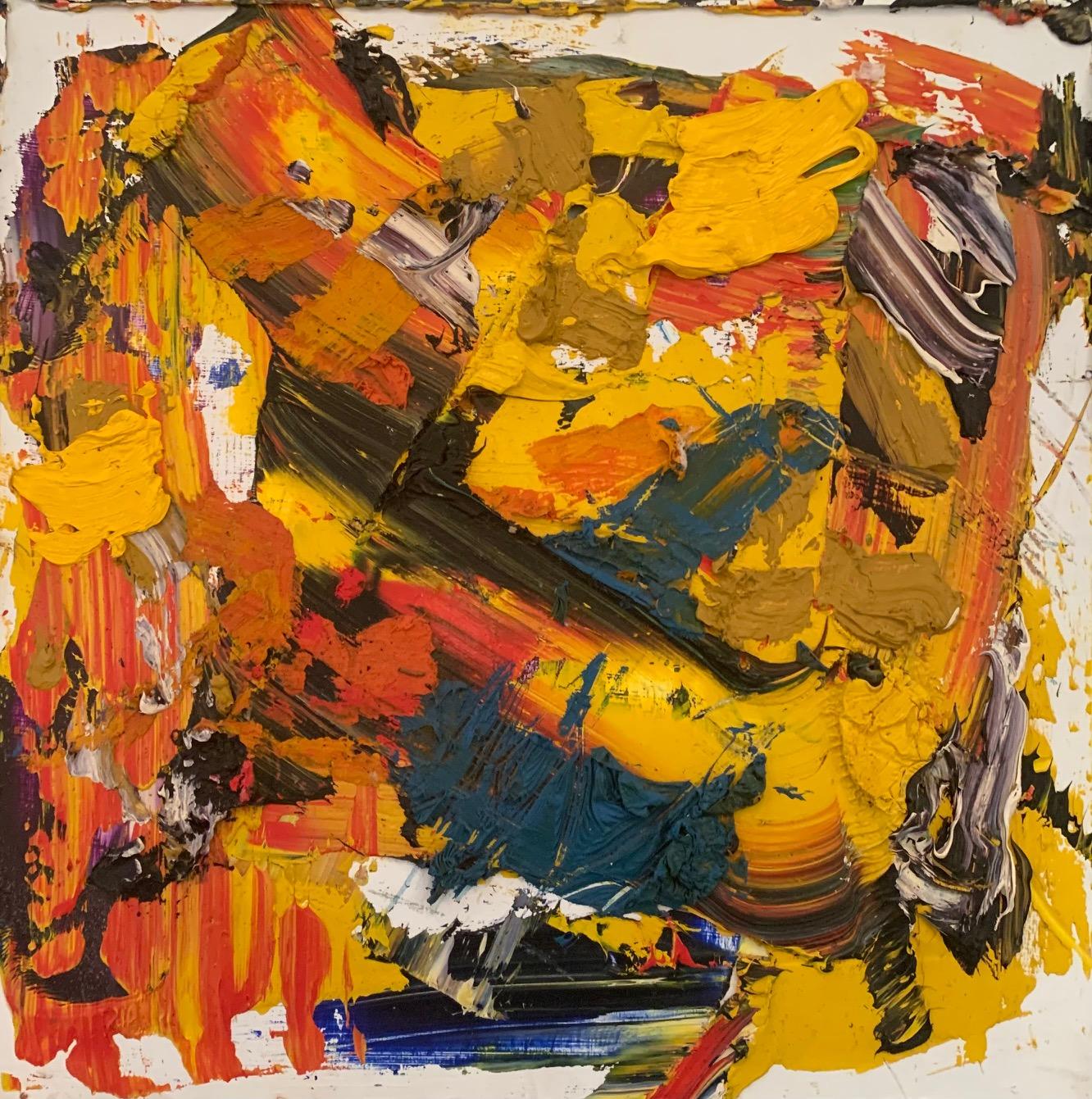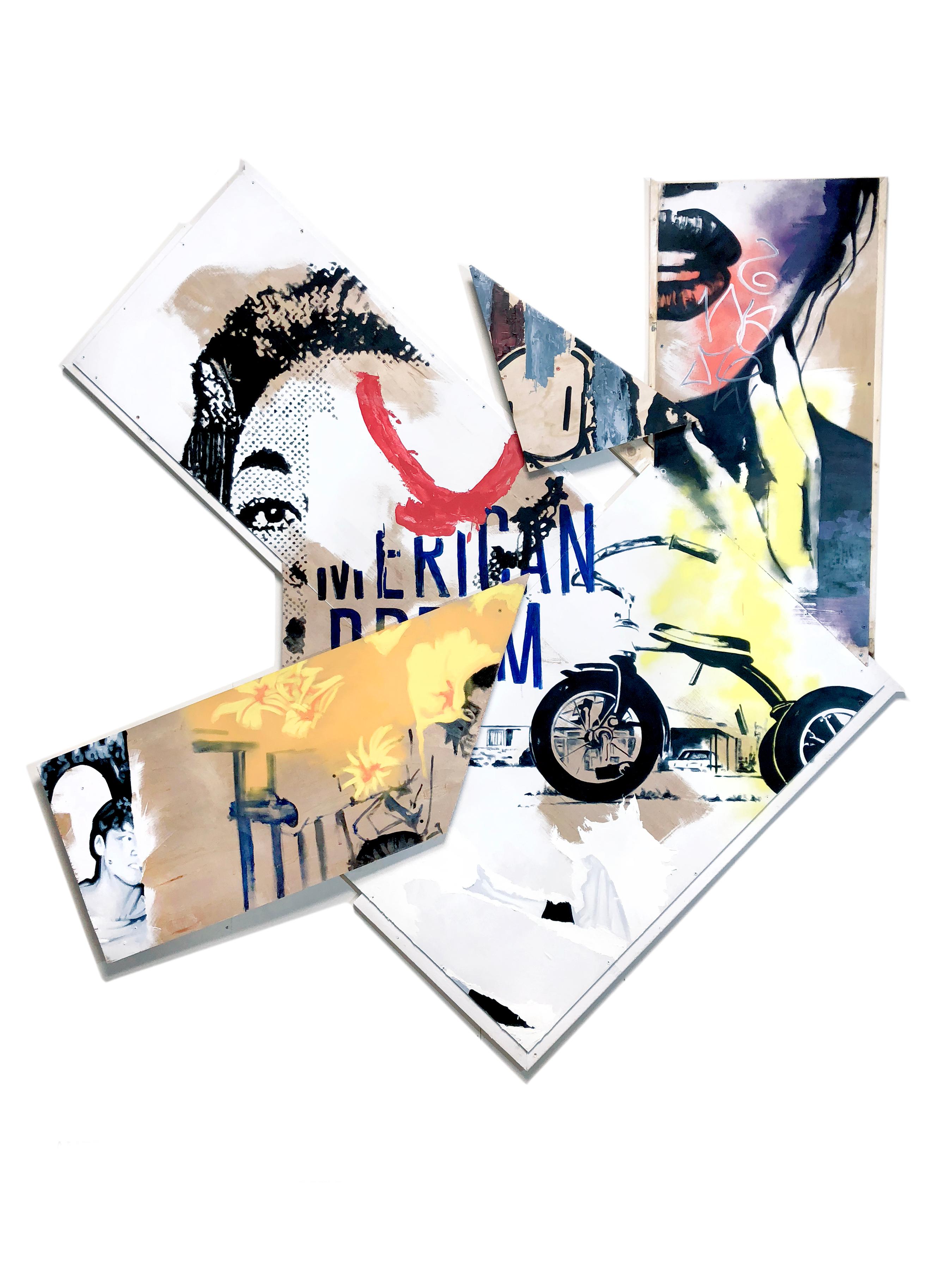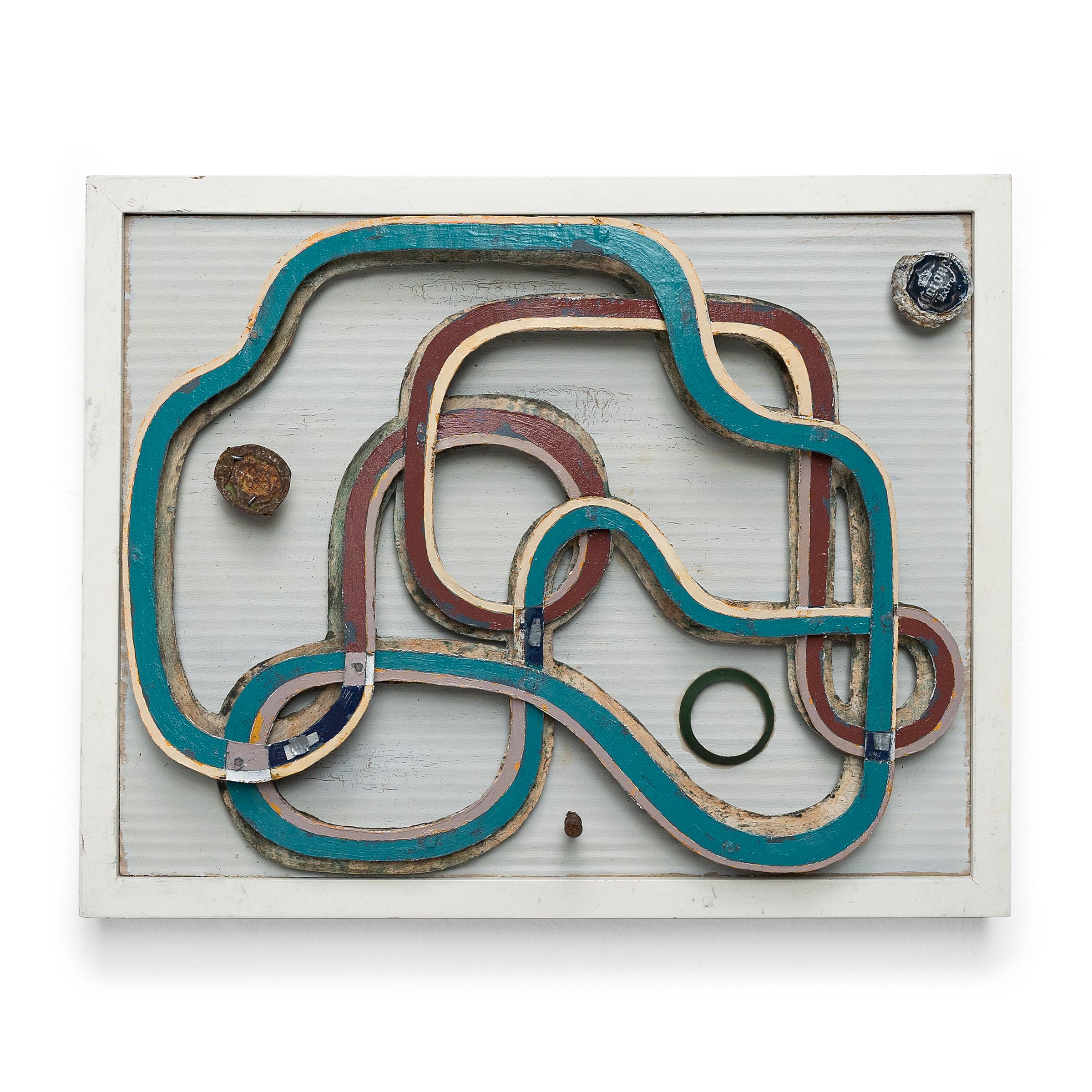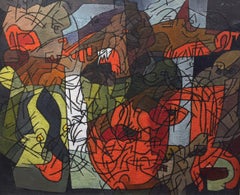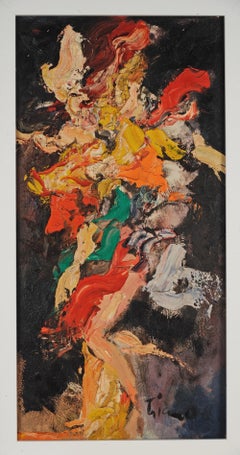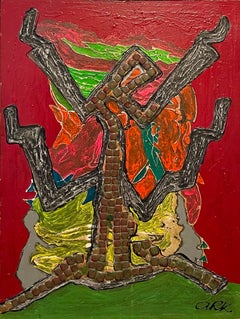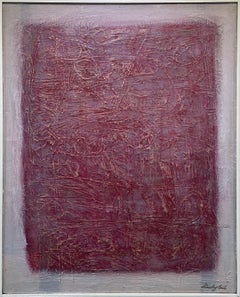
"Eden, " 1960s Modern Abstract Painting
View Similar Items
Want more images or videos?
Request additional images or videos from the seller
1 of 12
Stanley Bate"Eden, " 1960s Modern Abstract PaintingCirca 1960
Circa 1960
About the Item
- Creator:Stanley Bate (1903 - 1972, American)
- Creation Year:Circa 1960
- Dimensions:Height: 35 in (88.9 cm)Width: 28 in (71.12 cm)Depth: 2 in (5.08 cm)
- Medium:
- Movement & Style:
- Period:
- Condition:Signed by artist. Professionally framed.
- Gallery Location:Westport, CT
- Reference Number:Seller: SBA0691stDibs: LU5448678612
About the Seller
5.0
Vetted Seller
These experienced sellers undergo a comprehensive evaluation by our team of in-house experts.
Established in 2009
1stDibs seller since 2014
381 sales on 1stDibs
More From This SellerView All
- "Untitled, " 1950s Modern Abstract PaintingBy Stanley BateLocated in Westport, CTThisoil painting on masonite board, "Untitled," by Modernist Stanley Bate was created circa 1950, part of his earlier body of work. The dark, heavy line work combined with bright col...Category
1950s Modern Abstract Paintings
MaterialsOil, Board
- "Untitled #305 (Trees), " 1960s Modern Abstract PaintingBy Stanley BateLocated in Westport, CTThis Modern painting by Abstract Expressionist painter Stanley Bate depicts large trees in an abstracted landscape. The palette is bright and vibrant, with expressive strokes of pain...Category
1960s Modern Abstract Paintings
MaterialsBoard, Oil
- "Centurion, " 1960s Modern Abstract PaintingBy Stanley BateLocated in Westport, CTThis vertical format abstract painting by Modernist artist Stanley Bate measures at 26" x 50" framed. The original gold-hued floater frame pulls out the vibrant and warm pops of yell...Category
1960s Modern Abstract Paintings
MaterialsGold Leaf
- "Abandoned Village, " 1960s Modern Abstract PaintingBy Stanley BateLocated in Westport, CTThis Modern Abstract Expressionist painting by Stanley Bate is made with oil paint and and lacquer on board. It features light textured and a light blue-grey and yellow palette contrasted by the almost black focal point of the composition. The painting is 14.5" x 19" and measures 16.25" x 20.5" x 2" framed. Signed by the artist in the lower left-hand corner of the painting, it is framed in a floater frame with warm silver face and black sides and is ready to hang. Stanley Bate was born on March 26, 1903 in Nashville, Tennessee. The Bates were an established Tennessee family, in fact, Henry’s brother William Bate was the governor of Tennessee from 1883-1887 and a United States Senator from 1887-1905. Stanley studied art at the Watkins Institute in Nashville. In the 1920’s Bate moved to New York City to study at the Art Students League under Frederick Bridgman. He soon landed a job with Encyclopedia Britannica, and from 1927-1929 served as art editor. From 1929 until his death in 1972, Stanley was a self-employed artist. He taught art classes at both the Art Students League and the Albany Institute of History and Art and brought in extra income by making illustrations for magazines such as “Outdoor Life” and “Popular Science”. On January 27, 1934 Stanley married Emilie Rossel. Emilie had emigrated from Switzerland to New York in 1923. She found work as a governess to Alfred Vanderbilt and later as an executive secretary for Wall Street investment brokers Kahn, Loeb and Co. Emilie met Stanley in New York in the early 1930’s when she attended one of his art exhibitions with a friend. The couple, who had no children, lived on 34th Street in Manhattan. During this period, Bate was producing and exhibiting his art and joined several artists groups. Stanley and Emilie became part of the New York art scene, dining weekly at the Society of Illustrators Clubhouse. Stanley Bate’s time in New York was pivotal in the formation of his painting style. He lived in New York during the inception of one of the most important Modern Art movements, one that helped New York replace Paris as the center of avant-garde art. This movement, which was called the New York School of artists, was later known as Abstract Expressionism. It was comprised of a loosely associated group of vanguard artists working in New York City during the 1940s and 1950s. The New York School was not defined by a specific style, but instead reflected a fusion of European Modernism and American social relevancy that was depicted in many individual styles. Influences of Surrealism, Cubism, and Modernism can be found in their work, along with an interest in experimenting with non-traditional materials and methods. American art was in the forefront of international avant-garde for the first time. Stanley Bate was undoubtedly exposed to the varied styles and techniques that were emerging during the formative years of the New York School. Mark Rothko and Robert Motherwell were formulating their versions of color field paintings. Joseph Cornell was experimenting with assemblages, collage and the use of different types of textured paints. Jackson Pollock was adhering objects such as buttons and coins into his early works, while Louise Nevelson was using found objects. Helen Frankenthaler added sand to her early paintings. The New York School artists were undermining traditional fine art by using mixed media and non-traditional methods. Stanley Bate absorbed these varied influences and soon his early realistic landscapes and still-lifes were replaced with something entirely new. The influence of Cubism, notably the flat shallow space of the picture plane, is obvious in many of Bate’s paintings. Surrealism is evident in Bate’s use of subjects from myth, primitive art and antiquity, along with the Automatism-like line work in his more linear images. The unfettered experimentation of the New York School is everywhere in Stanley Bate’s work. We see nods to color field, collage, the mixing of textures into paint, mixed media, the inclusion of found objects and thick, luscious impasto. Bate was prolific and experimented in various media including oil, watercolor, lithography, silk screen, wood cut, drawing, collage, ceramics and sculpture. Bate is considered a true Modernist. His work is largely abstract, but sometimes figures and buildings are discernable. He frequently mixed paint, sand and glue together to achieve a textured surface, and then scraped and scratched through this layer to expose some of the underpainting below. His sculpture, which is often whimsical, also reflects the non-traditional methods of the New York School. Bate pioneered the use of enamel and copper in his work. The sculptures are not carved or modeled as was done in the past, but instead are built using mixed media and new materials. In addition to the New York School influence, many of Bate’s works exhibit a strong connection to the Spanish school, especially the work of Antonio Tapies and Modesto Cuixart. These artists were both part of an avant-garde group known as Art Informel, the Spanish equivalent of Abstract Expressionism. These artists likewise worked in mixed media and introduced objects and texture into their work. Many of Bate’s subjects and titles relate to Spanish locations and words. It is likely that Stanley spent time in Spain and found inspiration there. By the early 1940s, Stanley and Emilie had started spending weekends in a barn they purchased in Craryville, New York, a few hours north of Manhattan. The barn had no electricity or plumbing, but when the Bates eventually decided to leave New York and live full time in Craryville, they remodeled the barn, putting a gallery downstairs and a studio and living quarters upstairs. Although the Bates moved out of New York City, Stanley remained part of the New York art scene, exhibiting in New York and elsewhere throughout the 50s and 60s. During his lifetime he was represented by the New York galleries Knoedler and Company, Kennedy Galleries, Rose Fried Gallery and Key Gallery, along with Tyringham Gallery located in Tyringham, Massachusetts. Craryville was Stanley’s home until his death on August 21, 1972. Emilie died 1984...Category
1960s Modern Abstract Paintings
MaterialsLacquer, Oil, Board
- "Spirits Through Time II, " Abstract Figurative PaintingBy Ned MartinLocated in Westport, CTThis painting by Ned Martin blends the artist's signature abstract style with portraiture that is reminiscent of the Old Masters. The softly-executed face and neck of the woman in this painting is contrasted by textured abstract shapes that compose the rest of the painting, namely, the figure's orange, red, and green clothing...Category
2010s Abstract Abstract Paintings
MaterialsBoard, Oil
- "Spirits Through Time VI, " Abstract Portrait PaintingBy Ned MartinLocated in Westport, CTThis abstract portrait by Ned Martin blends realistic and abstracted styles. Part of his Spirits Through Time series of female portraits, the woman's face is rendered realistically, ...Category
2010s Abstract Abstract Paintings
MaterialsOil, Board
You May Also Like
- AbstractBy Anthony Thomas TrianoLocated in Kensington, MDAnthony Thomas Triano (American 1928-1997) Abstract 1966 Oil on Board Signed & Lower Right 30" x 15" inches unframed Submitted by Leni Robbi...Category
1960s Modern Abstract Paintings
MaterialsOil, Board
- Untitled, Oil on Acrylic Board, Black, Blue, Green by Indian Artist "In Stock"Located in Kolkata, West BengalAmitabh Sengupta - Untitled Oil on Acrylic Board , 12 x 18 inches , 2015 (Unframed & Door Delivered) Born : March 3, 1941, Mysore Bangalore Style : In his Cholamandal years, Vasude...Category
2010s Modern Abstract Paintings
MaterialsMixed Media, Oil, Acrylic, Board
- Chicago Jewish Modernist Mixed Media Surrealist Painting WPA Artist Mosaic TilesBy Alexander Raymond KatzLocated in Surfside, FLAlexander Raymond Katz (Hungarian-American, 1895-1974) initialed l.r. "A.R.K." inscribed verso "Prayer Tree", A Raymond Katz." Sight size: 39-3/4"h x 30"w Overall: 40-3/4"h x 30-3/4"w This is done in an Abstract Expressionist style with bold enamel like paint and applied ceramic or glass iridescent mosaic tiles. Alexander Raymond Katz, Hungarian / American (1895 – 1974) Alexander Raymond Katz was born in Kassa, Hungary, and came to the United States in 1909. He studied at the Art Institute of Chicago and the Chicago Academy of Fine Arts. In the late 1920s, he worked as a director of the Poster Department at Paramount Studios. He was appointed the Director of Posters for the Chicago Civic Opera in 1930. A WPA muralist, illustrator and modernist painter especially known for paintings with Jewish themes and narrative American scene works. Many notable Jewish artists worked for the WPA amongst them Ben Shahn, William Gropper, Aaron Bohrod and many more. During the Great Depression, notable architect Frank Lloyd Wright urged Katz to become a muralist. In 1933, he was commissioned to paint a mural for the Century of Progress exposition in Chicago. In 1936, he painted the mural History of the Immigrant for the Madison, Ill., post office. Katz’s works were included in various exhibitions and now are part of several museum collections, including those of the Art Institute of Chicago; Corcoran Gallery of Art, Washington, D.C.; and the Jewish Museum, New York. His murals, bas-reliefs and stained glass designs adorn more than 200 Jewish synagogues in the United States. Katz and other Jewish artists in Chicago who expressed Jewish and Biblical themes were inspired by the artist Abel Pann (1883-1963). Pann, who is regarded as the leading painter of the Land of Israel, exhibited in the Art Institute of Chicago in 1920. Early in his career, Katz began to explore the artistic possibilities inherent in the characters of the Hebrew alphabet. He developed aesthetic and philosophical interpretations of each letter and became the leading innovator and pioneer in the field of Hebraic art. Katz applies this concept in the woodcut Moses and the Burning Bush. Hebrew letters appears in Moses’ head, his cane and inside the flame. The initial of Moses’ name crowns his head. The letter in the flame is the first letter of the name of God. A combination of images and Hebrew letters appeared commonly in illustrations of the scene Moses and the Burning Bush in the Haggadah, the book of Passover. The symbolism of the burning bush corresponds to the motifs of A Gift to Biro-Bidjan. Among the fourteen participating artists were notable Chicago modernists Todros Geller, Mitchell Siporin, A. Raymond Katz, David Bekker...Category
Mid-20th Century Modern Abstract Paintings
MaterialsMixed Media, Alkyd, Board
- Unique, Acrylic, Coins, on Board, Red and Green Color by Sunil Das "In Stock"By Sunil DasLocated in Kolkata, West BengalSunil Das - Head, Ink & Watercolour on paper - 8.5 x 10.25 inches (unframed size) Shipped framed and ready to hang. Sunil Das (1939-2015) was a Master Modern Indian Artist from Be...Category
Early 2000s Modern Mixed Media
MaterialsMixed Media, Acrylic, Board
- Rhythmic 4 - Mixed Media on Panel by Marco Amici - 1992By Marco AmiciLocated in Roma, ITRhythmic 4 is an original oil and mixed media painting on panel realized by the Italian artist Marco Amici in 1992. Original Title: Ritmico Title and monograms are written by the ...Category
1990s Contemporary Mixed Media
MaterialsMixed Media, Oil, Board
- Abstract Painting Collage 165Located in Brescia, ITThis stunning abstract artwork was made in 1960, by the well known Italian artist Ermete Lancini. The artwork is a painting and a collage with fabric and other glued elements on the ...Category
Late 20th Century Post-Modern Abstract Paintings
MaterialsFabric, Paper, Oil, Cardboard
Recently Viewed
View AllMore Ways To Browse
Vintage But Modern
1960s Modern Art
Modern Past
1960s Modern Painting
Mixing Vintage With Modern
Mixing Modern With Vintage
Modern 60s Art
Modern Retro Illustration
Modern 21s
Abstract Lithography
Dior 1984
Cubism Painting S
Side Board Modern
Illustration Painting 1950s
Painting Of Dining Out
Dining Scene Painting
1940s Painting Magazine
Stanley American Modern
